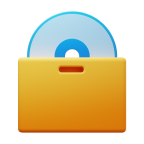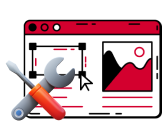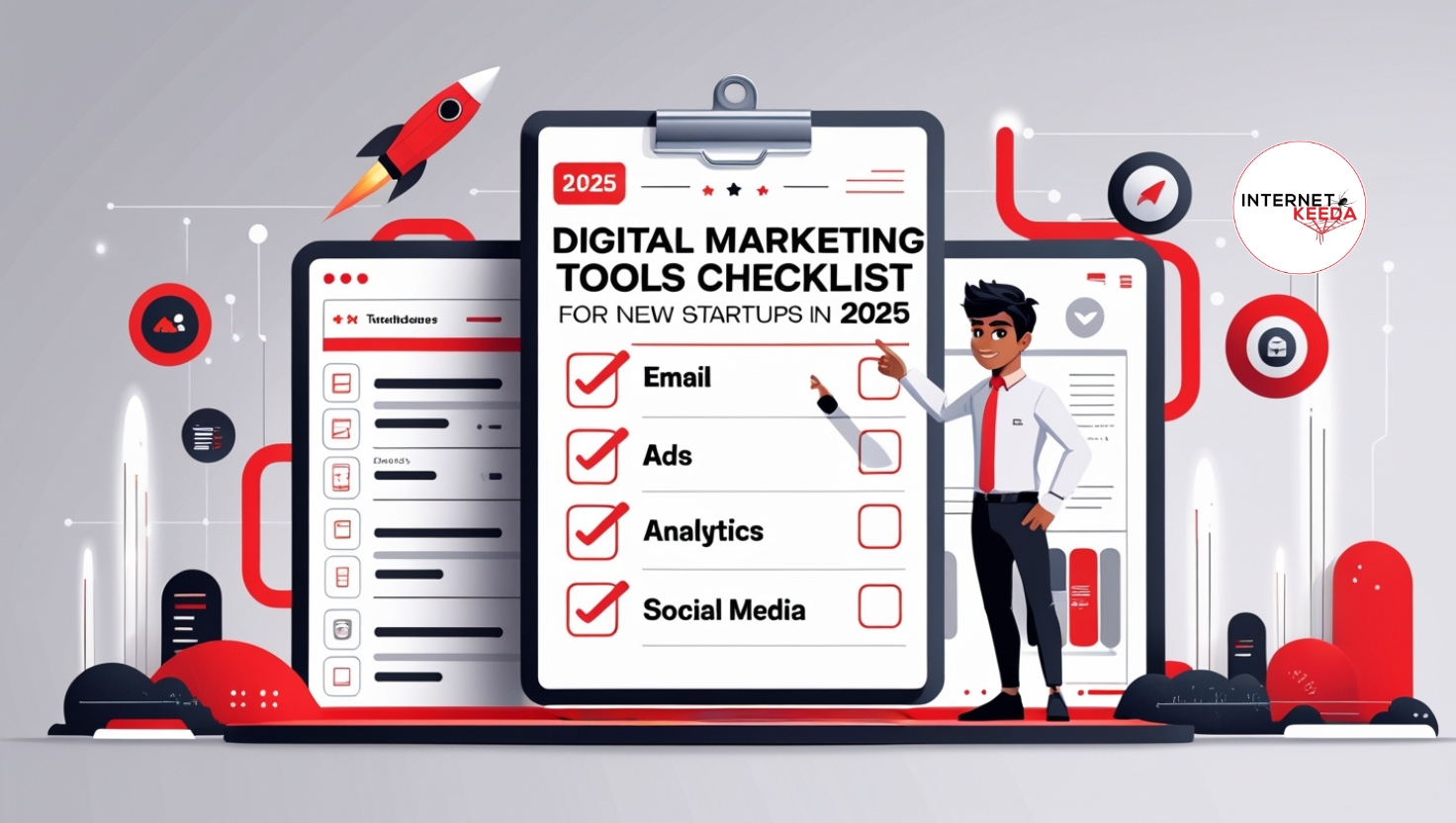Introduction: Starting Smart in a Noisy Market
Starting a new business is never just about the idea. It’s about execution, momentum, and how quickly you can figure out what works without burning out. In 2025, digital marketing isn’t just one piece of your growth strategy. It is the entire engine. But navigating the crowded world of tools, platforms, and shiny dashboards can feel overwhelming. You don’t need to use everything. You need to use the right things.
This checklist isn’t a generic roundup. It’s curated for real startups that are trying to do more with less. It’s based on what early-stage founders are using in the trenches. In coworking spaces, tiny home offices, or cafés, where dreams take shape between investor calls and late-night brainstorming. Each tool has a purpose, a reason to be on your radar, and a tip that can help you skip the learning curve.
Building Your Foundation: Website, Domain, and Content Hub
Before you dive into SEO hacks or social media strategies, you need to establish a solid foundation. For a startup in 2025, your website is not just a brochure. It’s your storefront, lead generator, brand ambassador, and sometimes even your only employee. Think of it as the digital equivalent of opening your doors for the first time. The kind of first impression it leaves can shape how people trust your product or service.
The temptation is always to overthink your website. You’ll hear terms like headless CMS, conversion optimization, heatmaps, scroll depth, and all the things that sound critical. And sure, eventually they will be. But at the beginning, your focus should be on clarity and credibility. Can someone land on your homepage and immediately understand who you are, what problem you solve, and how to take action?
For that, the stack doesn’t need to be complicated. WordPress still remains a reliable, flexible favorite. With themes like Astra or builders like Elementor, you can get a professional-looking site up in a weekend. If you’re more design-oriented or want something faster, Webflow has become a go-to, especially for startups that care about aesthetics and functionality equally. And for the simplest MVP-style launch, Carrd is wildly underrated. It’s perfect for one-page pitch sites, waitlists, or idea validation.
Your domain name still matters, not just for branding but for legitimacy. A ".in" domain can signal local focus, while ".com" still holds global weight. Don't cheap out here. Owning a clean, memorable domain helps avoid confusion, especially when word-of-mouth is still your most valuable marketing.
Once your domain and basic website are live, the next question is what content lives there. If you’re like most startups, your first instinct will be to wait until you "have time" to create a blog or case studies. Don’t. Even a single high-quality blog post or a story about why you started can serve as a trust bridge between you and a curious visitor. Real people connect to stories more than sales pages.
And yes, your website copy should reflect who you are, not just what you do. Skip the jargon. Avoid trying to sound bigger than you are. Be clear, honest, and inviting. Add testimonials, even if they’re from beta users or early feedback. Social proof doesn’t need to be flashy. It just needs to be real.
Pro tip: install Google Search Console and Google Analytics 4 right from the beginning. You might not look at the data much in the first month, but when you're ready to scale, that history will be gold. You’ll know which pages worked, what keywords people found you through, and what content brought the most engaged users.
In short, your digital foundation isn’t about perfection. It’s about showing up. Being searchable. Being credible. And being ready when opportunity knocks.
Visibility That Converts: Mastering SEO Without Feeling Lost
Once your digital storefront is live, the next challenge is getting people to find it. That’s where search engine optimization steps in. And no, you don’t need to be an SEO expert to make real progress. But you do need to understand what it means to be discoverable in the noisy online world.
SEO in 2025 is not just about stuffing keywords or trying to “trick” Google. The algorithms have grown smarter, and so have the users. People are searching with more intention now, and they expect to find real value on the other side of that click. As a startup, your goal is simple show up when someone is looking for exactly what you offer.
Here’s where it gets practical. Start with Google Search Console. It’s free, relatively simple to set up, and gives you an inside look at what search terms are already bringing people to your site. You might be surprised to see which pages are getting clicks and what kind of queries people use. It’s like hearing directly from your potential customers without them even knowing.
Then there’s Ubersuggest, which has become a reliable tool for startups and solo founders. With its free version, you get a few keyword searches per day, enough to understand your niche and where the low-hanging fruit lies. Instead of competing for high-volume keywords, look for the ones that are specific and problem-focused. If you’re a skincare startup in Mumbai, you’re better off targeting "affordable face serum for oily skin in India" than just "best skincare."
Next, install a content-focused SEO plugin like Rank Math or Yoast SEO (if you’re on WordPress). These act as your on-page guides. They’ll prompt you to use your keyword naturally, structure your headlines properly, and add meta descriptions that invite clicks.
But the real work lies in content. SEO starts with valuable content that answers real questions. Don’t just write blogs for the sake of it. Write the kind of post you wish existed when you were Googling a problem your product now solves. Explain your process. Talk about your story. Compare the tools you’ve used. And always include a next step a form, a contact link, or a product suggestion.
There’s also local SEO to think about. If your business has any geographical relevance, set up your Google Business Profile. Add accurate business hours, location, phone number, and a few high-quality photos. Ask your early users or clients to leave reviews. Even five reviews can make you stand out in a local search for "consultant near me" or "digital agency in Pune."
Over time, SEO becomes your most sustainable growth channel. It works while you sleep, builds trust over time, and unlike ads, it doesn’t charge you per click. The catch? It requires patience. But if you start right and stay consistent, it becomes your digital compounding interest.
The key isn’t to master SEO overnight. It’s time to start showing up in the right places with the right message. And to understand that visibility is not about being everywhere. It’s about being exactly where your ideal customer is already looking.
Content That Connects: Building Trust Before the Transaction
Think of your content as your handshake, the first impression you make long before anyone decides to buy. In 2025, content isn’t just a side task for marketing interns. It’s the voice of your brand, the reason people stay on your website, subscribe to your email list, or follow you on social media. For a startup, that voice can build credibility faster than any ad ever could.
When you're just starting, it’s tempting to aim for polished, professional-looking content that looks like it came out of a top-tier agency. But most people aren’t looking for perfection. They're looking for clarity. Honesty. A sign that someone on the other end understands what they're going through. That’s why your early content shouldn’t try to impress, it should aim to connect.
Start by documenting, not just creating. What did your team learn while building your product? What problem are you trying to solve, and why? What are the little wins or the struggles that you’re facing? That’s the kind of storytelling that builds emotional proximity. And it’s easier than you think.
Tools like Notion or Trello can help you manage your content ideas without the chaos. Plan out blog posts, short videos, FAQs, and social stories in one place. You don’t need to do everything at once. A weekly blog or bi-weekly email is a great start. Keep the topics simple and honest. "Why We Decided to Launch a Budget App for Freelancers" or "How We Lost Our First 10 Customers and What It Taught Us," those are stories worth reading.
When it comes to creating the actual content, platforms like Canva make it possible to design social graphics, infographics, carousels, and short videos without hiring a designer. It’s intuitive, flexible, and packed with templates you can tweak. And if writing isn’t your strongest suit, Grammarly helps you refine your message while keeping your tone consistent and clear.
Now, let’s talk about publishing. Your blog can live on your website, but your content should also flow to wherever your audience hangs out. If your users are on LinkedIn, post your story there. If they’re scrolling through Instagram, turn that blog into a carousel or a reel. If they’re on YouTube, narrate your process in a simple video. Content multiplies when you break it down and reuse it.
And don’t underestimate your voice. In the early stages, founders often become the most powerful marketing asset. When your community sees you talking about the journey unfiltered, imperfect, and real they start rooting for you. That’s a trust you can’t buy with ad money.
Content takes time to pay off. You’ll post blogs that get ten views, videos that barely register, and threads that get no likes. But the startups that keep showing up build a digital footprint that grows into something real. One reader becomes a subscriber. One subscriber becomes a customer. One customer becomes a fan.
If SEO gets you discovered, content is what makes people stay. It’s where your mission becomes a message. It’s where you turn curiosity into belief. And in a world full of noise, belief is your best marketing tool.
Smart Advertising, Not Just Spending: Making Every Rupee Count
There’s a moment every founder faces when organic reach just isn’t enough. You’ve got a solid product, a website that loads fast, maybe even a few blog posts live. But traffic is flat and conversions are slow. This is usually when you think about running ads. And rightly so. But paid advertising is not about how much you can spend. It’s about how much you can learn and how quickly.
For startups in India operating on tight budgets, ad spend needs to feel like an investment, not a gamble. Thankfully, in 2025, ad platforms are smarter, more data-rich, and more startup-friendly than ever. If approached with clarity, even a modest ad budget can produce measurable results and valuable insights.
Let’s begin with Meta Ads Manager, which covers Facebook and Instagram. These platforms remain powerful in India, especially for consumer-facing products. The key is not just setting up an ad but building a funnel. You don’t need a giant campaign. Start with a single goal — maybe traffic to a landing page or engagement on a new product post. Use interest targeting to get specific. Consider your actual audience: a 25-year-old Bangalore-based content creator or a parent in Delhi seeking healthier snacks for their kids. The more real the profile, the sharper your targeting.
Google Ads, on the other hand, is great for intent-based marketing. If someone is searching for “best GST software for freelancers” or “buy organic soap online India,” that’s an opportunity you don’t want to miss. With keyword ads, the challenge is not spending more, but choosing keywords wisely. Go for medium-search-volume phrases that show buying intent. Avoid broad terms unless you have a big budget or lots of content to support it.
For smaller budgets and quicker feedback loops, tools like Quora Ads and LinkedIn Ads can be useful too. Quora lets you appear in front of people asking real questions in your niche. If your startup sells HR software, showing up in a thread like “How to improve employee retention in startups?” positions you as a solution rather than just a seller.
One trick is to start with remarketing. That means showing ads only to people who have already visited your site. These are warmer leads and usually convert better. Platforms like Google and Meta let you install simple pixels that track who visits which pages. You can then serve tailored ads that match the visitor’s last action. Maybe someone read your blog on “How to Choose a CRM” but didn’t sign up. You can gently remind them with an ad featuring a testimonial or a discount.
As you start running ads, pair them with analytics. Tools like Google Analytics 4 help you understand not just who clicked, but what they did after clicking. Did they scroll? Did they bounce? Did they fill out a form? These behaviors tell you where your funnel is working and where it’s leaking.
What matters most is your mindset. Ads aren’t magic buttons. They are tests. Each campaign gives you feedback. Some will flop. Some will surprise you. But if you’re listening to the data, refining your targeting, and aligning your message with the real needs of your audience, you’ll start to see results that go beyond clicks, actual conversions, paying customers, and data that informs the rest of your marketing.
In a landscape where visibility is currency, paid ads help you show up when it matters most. Not louder. Just clearer. And more intentional.
Tracking What Matters: Metrics That Don’t Just Look Good, But Build Growth
If there’s one place where most startups go silent, it’s in the numbers. Not the investor pitch numbers, but the day-to-day data that shows if your marketing is working. And no, we’re not talking about likes or impressions. We’re talking about traffic that sticks, content that converts, and customer journeys that make sense.
In 2025, data isn’t something you save for board meetings. It’s your daily map. And the better you read it, the faster you grow.
The first stop in your analytics toolkit is still Google Analytics 4. Yes, the interface has changed, and yes, it can feel like learning a new language. But here’s the truth: even with just 30 minutes a week, you can get clarity that changes your strategy. Focus on three things — where your visitors are coming from, what pages they’re spending time on, and whether or not they’re taking action.
For example, a recent report by Statista showed that more than 76 percent of Indian internet users access the web primarily through mobile devices. That means if your landing page looks great on desktop but takes too long to load on mobile, you’re bleeding potential customers. Google Analytics will show you bounce rates by device, time spent per page, and drop-off points in your funnel.
Then there’s Google Search Console, your secret window into what Google thinks your site is about. You’ll see real keywords people use to find your site. Not just what you’re trying to rank for, but what’s driving clicks. In a 2024 study by Ahrefs, 90.63 percent of web content gets no traffic from Google at all. That’s a sobering stat. But it also means there’s an opportunity if you’re paying attention to which pages are starting to rank and why.
Pair this with Hotjar or Microsoft Clarity. These tools show you what users do on your site — where they scroll, where they hesitate, and what they ignore. It’s like watching over someone’s shoulder while they browse. And that insight? It’s priceless. Maybe you think your call-to-action is obvious, but users are missing it. Maybe they’re abandoning your form because it’s just one question too long.
Then comes the emotional layer. Are people clicking, reading, and leaving? Or are they returning, engaging, and signing up? You can get this from tools like HubSpot CRM, even in its free version. Track the journey from first touchpoint to email subscription to eventual conversion. Once you map this, your marketing stops feeling like shouting into a void. It becomes a conversation.
For startups, measuring ROI doesn’t always mean revenue. Sometimes, it means learning which campaign brought your first 500 visitors. Or figuring out which blog topic keeps showing up in organic search month after month. These are the clues that point you toward scalable growth.
And here’s a truth no glossy dashboard will tell you not all metrics are worth your energy. Vanity numbers might boost your ego, but they won’t pay your bills. Ten highly engaged users who click, reply, and buy are worth more than ten thousand impressions from people who never return.
So, build your analytics habit. Set aside time every Friday. Open your dashboards. Ask better questions. What’s working? What’s missing? What’s surprising?
Your data isn’t just numbers. It’s behavior. And behind every click is a human decision. Read those decisions carefully, and your marketing will start to feel less like a gamble and more like a system that runs with clarity and intention.
Content Marketing Tools That Help You Create Without Burning Out
Every startup knows that content is powerful. It’s the magnet that draws in curious users and the proof that your brand knows what it’s talking about. But creating great content week after week takes time. And for a small team juggling product updates, customer support, and funding pitches, content often becomes the first thing to fall behind. That’s where the right tools can give you momentum without requiring a full-time writer or an expensive agency.
Start with the backbone of any content system, which is your idea bank. Tools like Notion or Trello let you organize your blog topics, email themes, and social media ideas in one place. You don’t need to be a productivity geek to use these. A simple board with columns for idea drafts published and promoted is often all you need to keep the creative flow moving forward. It’s about visibility and momentum, not perfection.
Now for the actual creation. In 2025, AI writing assistants will no longer be a novelty. They’re built into your workflows. Tools like Jasper or Writesonic can help generate blog outlines, write intro paragraphs, or even repurpose one piece of content into multiple formats. This doesn’t mean you’re handing over creativity to a robot. It means you’re giving your brain a running start. One founder in Mumbai who runs a bootstrapped edtech startup shared how they use AI to create the first draft of every post and then edit it down with real-world examples and their brand tone. The result is faster production and more time to focus on growth.
Design still matters, especially on social. Canva remains a favorite not because it’s flashy but because it works. Even on a free plan, you can create professional-looking graphics that match your brand. The drag-and-drop simplicity is a lifesaver for founders who aren’t designers but need to look polished. And with the rise of short video tools like InVideo and Pictory, it’s now possible to turn blog posts into snackable videos that can be shared across Instagram, LinkedIn, and YouTube Shorts without spending on a videographer.
Then comes scheduling. You want your content to show up consistently, even when you’re stuck in meetings or focused on product fixes. Tools like Buffer and Publer let you line up an entire week of posts in one sitting. Choose a rhythm that works for your audience, whether it’s three Instagram posts per week, one LinkedIn update on Monday, or a weekly newsletter on Fridays. The tool does the heavy lifting, but the voice still needs to be yours.
And speaking of newsletters, they remain one of the most trusted ways to build a long-term relationship with your audience. Email marketing tools like MailerLite or ConvertKit are ideal for startups. They offer automation without complexity, letting you set up simple welcome series nurture flows or even product updates that feel personal. The key is to treat email not as a one-way blast but as a conversation that builds over time.
One SaaS founder from Pune shared how their early traction came almost entirely from a blog and a newsletter. With zero ad budget, they focused on writing one insightful article every week and emailing it to a small but growing list. Within six months, they were getting demo requests from people who had been silently reading every post. Content didn’t just inform their audience, it built trust and sales.
Creating content isn’t about chasing trends or gaming algorithms. It’s about showing up with value and consistency. And when the tools are chosen wisely, they become quiet partners in your process, not distractions.
So if you’re running lean, focus your energy on tools that give you leverage, not just tasks. The right setup doesn’t just help you post more often. It helps you stay in the game long enough to see the results.
Automation Tools That Save Time and Build Systems Early
In the early days of running a startup, time is your most fragile currency. You trade it for learning, for building, for finding those first ten loyal customers. But there’s a limit to how many things one person or a small team can do well. That’s why automation doesn’t just help you work faster, it helps you work smarter. It allows you to repeat what’s working without repeating yourself. And the earlier you start building these systems, the more room you leave for creativity and growth.
Imagine this. You launch a new feature on your website, and you want every new sign-up to receive a welcome email. You also want to add their info to your CRM, maybe trigger a Slack notification for your team, and update a sheet you share with your investor. Doing this manually every time would eat up your day. But with a tool like Zapier or Make, you can stitch all of that together in less than an hour. No code, no developer, just logic and flow. One startup founder from Bengaluru explained how they used automation to respond instantly to inbound leads. It cut their response time from hours to seconds and helped them land deals before the competition even replied.
But automation isn’t only about email or lead forms. It can streamline how your social media works, how you onboard clients, or even how you generate reports. Buffer and Metricool, for example, don’t just schedule posts; they can trigger reports based on engagement. Imagine starting every Monday morning with an email showing you what worked last week, what didn’t, and what needs attention. That kind of insight, automated and waiting in your inbox, keeps you focused on action instead of guesswork.
And then there’s customer support. It’s easy to get buried in repetitive queries when your product is new. Tools like Tidio or Crisp combine live chat with AI-powered responses. You can program answers to common questions so your users get help instantly, while your team can step in when needed. These small time savers add up. One founder we spoke with shared how just automating their chat flow helped them reduce daily support tickets by 40 percent. That wasn’t just time saved. It was energy redirected toward improving the product.
The deeper truth is that startups don’t fail from a lack of ideas. They stumble because they run out of energy trying to do too much. Automations give you back your mental space. They let you focus on big moves while the small tasks take care of themselves. And when these systems are built right, they scale with you. What works at ten users should still work at a thousand. That’s the quiet power of automation, it doesn’t scream for attention, it just hums in the background, keeping things moving.
So even if you think you’re too early for automation, start small. Create one flow. Automate one task. Save one hour. Because the more time you save now, the more freedom you’ll have to chase the next big opportunity.
Analytics Tools That Turn Your Gut Feelings Into Real Answers
Every founder has instincts. You start with a vision, build a product, and try to get people to care. But instincts only take you so far. At some point, you need to know what’s working and what’s not. That’s where analytics becomes your closest advisor. The right data doesn’t just tell you the story of what happened. It shows you what to do next. And for startups that are growing fast with limited resources, that clarity is often the difference between momentum and missteps.
Google Analytics has been the default for years, and in 2025, GA4 has become even more powerful for startups who are serious about tracking user behavior. But it’s not just about page views or bounce rates anymore. Smart founders dig into events, user journeys, and funnels. One Delhi-based health tech startup shared how they realized users were dropping off right after reading a single blog post. They used GA4 to trace the journey, noticed a weak call-to-action, and within a week, redesigned the layout to drive more newsletter signups. That small fix tripled their leads over the next month. Sometimes, data doesn't just show the problem. It hands you the solution.
Then there’s Hotjar and Microsoft Clarity. These tools help you see how real people move through your site. Not as numbers, but as actions. Heatmaps, scroll depth, session replays, these show you where people are getting stuck, where they hesitate, and where they click like clockwork. For one bootstrapped SaaS startup, watching actual user recordings revealed that their pricing page was confusing. They weren't getting fewer leads because their offer was bad. They were losing them because the information was hard to read. A few design tweaks later, conversions started rising without changing a single word in their sales copy.
Beyond website data, startups now rely on product analytics platforms like Mixpanel or Amplitude. These aren’t just for big tech companies. Even a solo founder can track which features users love, where they churn, and how active they are week over week. In a market where retention matters more than vanity metrics, knowing what your users do inside your product is gold. One logistics startup from Jaipur used Mixpanel to track how often clients used the automated shipping tool. When usage dipped, they didn’t wait for churn to show up in revenue. They sent out a short video tutorial, improved the onboarding, and usage bounced back. Data let them solve the issue before it became a crisis.
Even on the content side, tools like Ubersuggest and Search Console give you more than traffic numbers. They show you what people are looking for, how your content ranks, and what gaps you can fill. For a digital services startup offering branding and content writing, seeing that most traffic came from older blog posts helped them realize they needed to update outdated content to stay visible. That decision alone gave them a 30 percent increase in organic traffic within two months.
The goal isn’t to drown in dashboards or chase every metric. It’s to find the few signals that matter and check them regularly. For most early-stage teams, that’s traffic sources, conversion paths, retention, and top-performing content. Build a weekly habit. Set aside one hour to review the numbers and write down what they’re telling you. Over time, this becomes less of a task and more of a ritual. It helps you make faster decisions with fewer regrets.
Good data makes you braver. When you know what’s working, you invest more confidently. When something’s off, you catch it early. That’s how smart startups stay lean without staying lost. They replace hunches with insight and move forward with clarity.
SEO Tools That Help You Compete Without Spending Like a Giant
Search visibility is the quiet engine behind most successful digital businesses. It’s not loud like ads. It doesn’t give you instant dopamine like social media likes. But it works quietly in the background, building traffic, brand authority, and leads over time. And for startups, especially in India’s crowded digital space, showing up in search results often means being taken seriously. It’s how a solopreneur becomes a trusted voice, and how a small business starts to punch above its weight.
Most early-stage founders know SEO is important. What they struggle with is knowing where to start and which tools are worth learning. That’s why tools like Google Search Console are non-negotiable. It’s completely free, and yet many startups still overlook it. This tool shows you the exact keywords people are using to find your site. It tells you which pages are getting seen and which are being ignored. It gives you real-world insight from Google itself, not guesswork. One bootstrapped ecommerce brand from Coimbatore used this data to find that most of their organic traffic came from product-related queries they hadn’t optimized for. They tweaked their product descriptions and URLs, and within three weeks saw a lift in both traffic and time-on-page.
If Search Console is your foundation, Ubersuggest is your compass. Created by Neil Patel, this tool gives startups the power to do real keyword research without hiring an SEO agency. You can plug in any topic or competitor URL and instantly see keyword ideas, difficulty scores, and content suggestions. A digital course creator from Pune shared how she used Ubersuggest to find long-tail keywords with low competition. Instead of trying to rank for “digital marketing,” which is insanely competitive, she focused on “digital marketing for small business owners in India.” That shift gave her faster wins, better engagement, and a clearer niche.
For those using WordPress, Rank Math and Yoast SEO simplify on-page optimization. These tools act like a personal SEO coach inside your dashboard. They flag missing metadata, suggest internal links, and guide you on keyword placement. It’s not just about ticking SEO boxes. It’s about making your content readable and discoverable. One content agency in Bangalore tested posts with and without these plugins and found that optimized content ranked faster and stayed visible longer.
And it’s not just about keywords anymore. Google is smarter now. It cares about user intent, content quality, and how helpful your site actually is. That’s where tools like AnswerThePublic or AlsoAsked come into play. They help you understand the questions your audience is asking. When you create content that directly answers those questions, you don’t just get traffic. You build trust. People stay longer. They come back.
The best part? Most of these tools either have generous free plans or low-cost tiers designed for small teams. You don’t need a big agency or a fat budget. You need consistency. SEO is a long game, but it’s one of the most reliable and scalable channels out there. It keeps working even when you sleep, even when your ads pause, and even when the algorithm gods on social platforms change their minds.
Start by identifying five keywords related to your product or service. Use Ubersuggest to check how competitive they are. Create one piece of content per week targeting each one. Use Rank Math or Yoast to optimize it. Then monitor it in Search Console and see what happens. Track the progress over 90 days. You’ll start to see patterns. Some pieces will rank. Some won’t. Adjust and try again. This is how real SEO is built.
And remember, you’re not trying to win Google overnight. You’re trying to show up when the right people are searching. That one blog post you publish today might bring in leads for the next two years. That’s how SEO compounds. Slowly, steadily, quietly.
Advertising Tools That Help You Spend Wisely and Scale Confidently
Advertising is often the fastest way to get attention, but it’s also where early-stage startups can lose money the quickest. When you’re working with a tight budget and even tighter timelines, every ad dollar has to pull its weight. You don’t have the luxury to test endlessly or throw cash at vague impressions and hope for conversions. You need tools that help you spend smarter, not harder. And thankfully, in 2025, that’s more possible than ever.
Most founders start with Meta Ads or Google Ads because they offer scale and targeting. But without the right tools, these platforms can feel like slot machines. That’s where something like AdEspresso becomes valuable. It simplifies the process of creating, testing, and optimizing ads on Facebook and Instagram. One early-stage fashion brand in Mumbai used AdEspresso to run ten variations of the same product ad with different images, headlines, and calls to action. They discovered that a simple black-and-white photo with a handwritten-style font outperformed their polished studio images. That one insight helped them cut ad costs by 40 percent and doubled their return in less than a month.
Then there’s Google Ads Editor and the Keyword Planner tools. These aren’t flashy, but they’re foundational. Startups that treat Google like a research partner instead of just an ad vendor often find better angles and gaps. A startup offering CRM software in Chandigarh used Keyword Planner to uncover high-intent but low-competition terms like “free CRM for small team India.” They built a simple landing page around it and started pulling in qualified leads at a fraction of the usual cost.
Performance tracking tools like SEMrush and SpyFu can show what your competitors are bidding on, how much they’re spending, and which of their ads are performing well. This isn’t about copying. It’s about understanding the landscape. It’s like knowing the routes your competitors are taking so you can decide whether to follow, improve, or take a smarter detour.
Many bootstrapped startups also benefit from retargeting platforms like Retargeter or AdRoll. These allow you to follow up with people who’ve interacted with your brand but didn’t convert the first time. And the reality is, most people don’t. They visit, they get distracted, they forget. Retargeting gives you another chance. It gently brings them back when they’re ready. One handmade skincare brand in Kerala shared how they added a retargeting campaign that reminded site visitors about abandoned carts. The result was a twenty percent increase in conversions without increasing their overall ad budget.
And sometimes the best advertising tool isn’t a tool at all. It’s a well-built customer list. Platforms like Mailchimp or ConvertKit help you turn paid clicks into lasting relationships. Because the first purchase is nice, but the second, third, and fourth are where your business becomes sustainable. Smart startups use their ad tools not just to sell but to start a conversation to learn what works and to build brand memory in a noisy digital world.
Advertising will always be part risk, part reward. But with the right tools and mindset, you can shift the odds. You can test faster, learn quicker, and scale with confidence instead of chaos. It’s not about spending the most. It’s about understanding enough to spend wisely. And that’s how scrappy founders become sustainable brands.
Building Smarter Not Louder
Digital marketing in 2025 isn’t about doing everything. It’s about doing the right things with purpose. It’s about knowing that tools are not magic shortcuts but smart companions in a long journey. For new startups, especially in India, where resourcefulness often replaces resources, the difference between staying afloat and scaling up comes down to how well you pick your stack.
You don’t need twenty dashboards. You need clarity. You don’t need to mimic unicorns. You need to understand your unique edge and amplify it. The digital marketing tools we’ve explored in this checklist are not just software. They’re quiet force multipliers behind some of the most inspiring startup stories happening today. Founders who used analytics to find their first 100 users. Solopreneurs who optimized one landing page saw their revenue triple. Small teams who discovered that a consistent email strategy beats a viral video.
The world of startups is noisy and unpredictable. Algorithms shift. Platforms rise and fade. But the startups that survive and thrive are not those chasing every trend. They are the ones who build strong systems, simple processes, and a mindset focused on learning. Every tool you use should serve a goal and save you time so you can focus on the work that moves the needle.
You’re not just growing a business. You’re building something that reflects your ideas, your vision, and your grit. And in that process, every small win matters. Every SEO tweet, every ad insight, every email open is a signal that your story is reaching someone. The right tools won’t do the work for you, but they will clear the path so you can run with less friction and more clarity.
Keep it lean. Keep it intentional. And always stay curious. Because in this digital landscape, the most powerful thing you can do is keep learning and keep building. The tools will change. The mission stays the same.
 Bundles
Bundles Flash Sales
Flash Sales






















Comments (0)